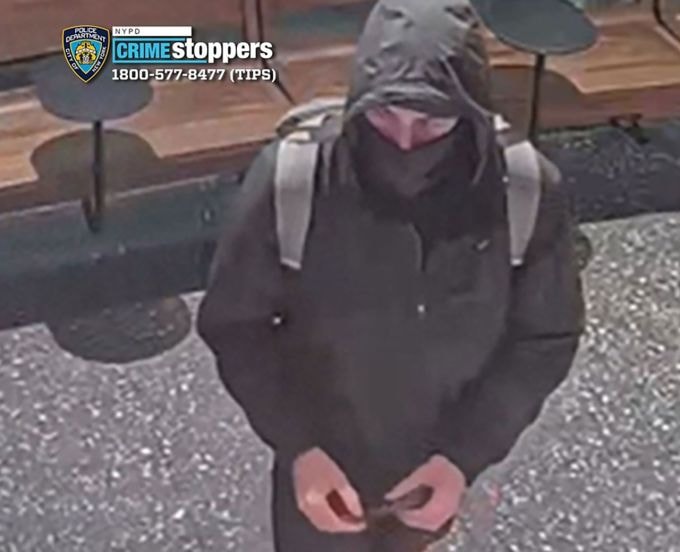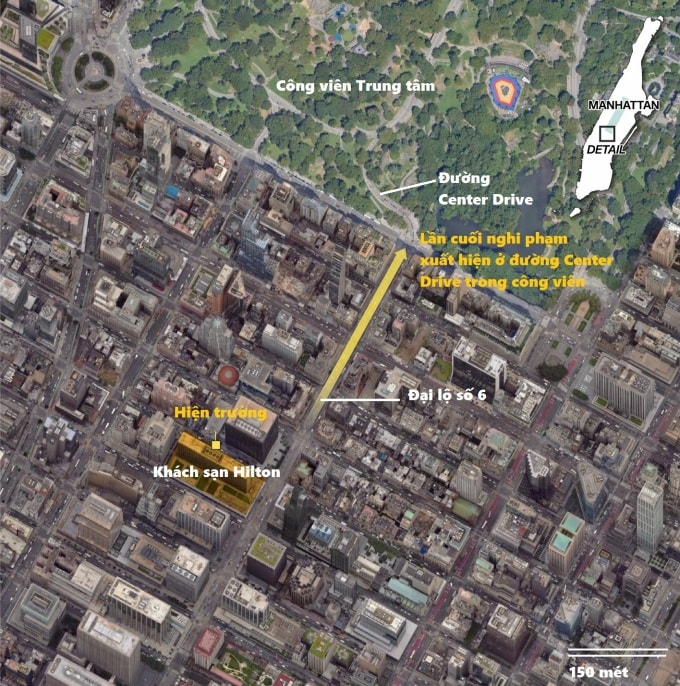Based on images from security cameras and analysis of evidence at the scene, US police are trying to reconstruct a portrait of the killer who shot CEO Thompson in the middle of a New York street.

Brian Thompson, 50, CEO of health insurance company UnitedHealthcare, was shot on the morning of December 4 in Midtown Manhattan, New York, while on his way to the New York Hilton hotel to attend the company's annual investor conference.
Security cameras captured the moment the suspect, wearing a black hooded jacket and carrying a gray backpack, emerged from behind a row of cars on the left behind Thompson, pulled out a gun and shot him in the back from about 20 feet away. After at least three shots, the CEO of one of the largest health insurance companies in the United States collapsed to the pavement.
The killer then ran across the street into an alley, walked along Sixth Avenue, and rode an electric bike toward Central Park, from where he lost track.
The assassination shocked the United States because it took place in broad daylight, in one of the most crowded cities in the world, forcing the New York Police Department (NYPD) to devote all its efforts to investigating and hunting down the suspect.
NYPD Chief Jeffrey Maddrey said the department will deploy helicopters, drones and dogs to hunt down a "very experienced gunman" in a "very brazen" killing.
"With a case as serious as this, we spare no expense," said Mr. Maddrey.
Investigators analyzed all video footage extracted from surrounding security cameras, interviewed Mr. Thompson's friends, colleagues, and family, as well as reviewed the CEO's social media accounts to create a timeline of the case.
By the end of the day on December 4, New York police had released at least five images and videos of the suspect. The images showed the suspect appearing early in the morning on the Upper West Side, carrying what appeared to be an electric bicycle battery. Investigators believe the suspect may have taken the subway from the Upper West Side to Midtown Manhattan, where the crime was committed 5 km away.
Security cameras from the Starbucks on Sixth Avenue showed the suspect entering the store to buy two energy bars, a bottle of water, and a cup of coffee before going out to ambush Mr. Thompson about two blocks away.
The killer's identity and motive remain unknown, but New York police discovered three 9mm bullets at the scene engraved with the words "deny", "depose" and "defend", which may be a message left by the killer.
In addition to the three bullets, police also found a coffee cup and a water bottle the suspect bought at Starbucks in a trash can near the scene, along with a phone believed to have been dropped by the killer as he ran into an alley to escape.
Police can search for fingerprints or DNA on these items, as well as analyze the phone's data. Even if it is a disposable phone, it can still provide valuable information about the killer's conversations before the crime.
Investigators are searching for two key pieces of evidence in the case: a gun with a silencer and an electric bicycle that the suspect used to escape.

Police have also asked security guards and managers of nearby buildings to continue providing images extracted from security cameras. They will analyze each frame to find any traces that may be related to the suspect.
After the September 11, 2001 terrorist attacks, the New York Police Department, with the help of the government, invested resources to expand its security surveillance capabilities. New York City now has a dense and extensive security camera system from both public and private areas, making it easy for police to determine the location of people.
New York has superior investigative capabilities than most other cities in the US thanks to a camera system spread across these five boroughs, but the process of tracking down suspects is often not easy and quick.
In April 2022, it took New York police more than 31 hours to arrest Frank James, even though his shooting on the Brooklyn subway during rush hour was recorded by security cameras.
"This process is not as quick as it looks on TV, but it is long and tiring. Investigators need to analyze tens of thousands of hours of video, from all camera sources," said Brittney Blair, a private security and investigation expert in New York.
Ms. Blair said that despite possessing modern surveillance technology, New York police will still have to rely on sharp, experienced investigators to find suspects.
"There is no magic technology that can instantly identify a person, but Manhattan is the worst choice for a killer to commit a crime," she said, expressing confidence that the police will soon find the suspect.
University (according to VnExpress)